
Over the years we have seen an increased focus on off-page SEO techniques. However, it won’t help much without paying attention to on-page SEO. The way you optimise your web page can have a massive impact on its ability to rank well.
Being successful in organic search requires you to optimise a combination of factors that search engines consider important. This refers to technical, on-page and off-page SEO. Truth is, on-page SEO optimisation requires careful attention and it should be constantly prioritised.
Considering how the modern search landscape is evolving, it’s important to keep your on-Page SEO knowledge up to date. In this article, we’ll take a closer look at 12 on-Page SEO factors that focus on search engines and users.
What Is On-Page SEO And Off-Page SEO?
On-page SEO, or on-site SEO, is the practice of optimising website pages to improve search engine rankings in an attempt to earn organic traffic. Not only does this refer to publishing relevant and quality content, but it also includes optimising headlines, HTML tags (title, Meta, and header) and images.
It also means making sure that your website comes across as expert, authoritative and trustworthy. On-Page SEO takes into account various aspects of the webpage will improve a site’s visibility in search engine results.
Off-page SEO, on the other hand, refers to page ranking factors that occur away from your website. This includes backlinks from another site and promotion methods, taking into consideration the amount of exposure content gets on social media.
On-Page SEO Techniques For Higher Google Rankings
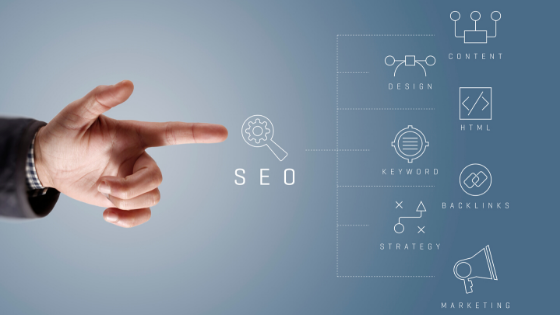
1. Leverage SEO-Friendly Permalinks
Ideally, your website links should be short and keyword-rich. Don’t use long and unattractive links like wsi-emarketing.com/dm=2019 for example. Google has confirmed that the first 3 to 5 words in any URL will receive the most weight for ranking purposes. The most effective URL structure typically only has 2-4 words. These shorter URL’s are easy to remember, simple to enter into the browser while being optimised for search engines.
SEO-friendly Permalink Example: Social Media Marketing – WSI-eMarketing

2. Include Primary Keyword In The Title Tag
A title tag is the most important element in on-Page SEO as they help search engines understand what the page is all about. Google generally only displays the first 50-60 characters so it’s best to keep headings under 60 characters. Several studies have shown that pages where the title starts with a keyword rank higher than pages with the keyword in the middle or at the end.
Title Tag Example: WSI-eMarketing – Digital Marketing Consultants

3. Use Modifiers In Your Title
Keyword modifiers can be described as extra words that people will add to their main search query for more relevant results. By adding modifiers to your title, you could rank higher for long-tail versions of your targeted keyword. Depending on the content and title, use modifiers like “best”, “guide”, “2020”, “review” or “for travel agents”.
For example, if your primary keyword is “Marketing Automation”, a long tail version could be “Best Marketing Automation Software For Travel Agents”. Here, the modifiers are “Best” and “Travel Agents”
Another example is if your primary keyword is “running shoes”, a long tail version could be “Men’s Running Shoes For Under £100”. The modifiers, in this case, would be “Men’s” and “Under £100”.
4. Use More Than Text
You have to use more than just text as it can only take your content so far. Always include captivating and engaging images, videos, diagrams and graphics as it can minimise bounce rates while increasing time spent on the website.
Online content needs to adhere to the E-A-T principle which refers to Expertise, Authoritativeness and Trustworthiness. It’s the framework that Google uses to assess content on webpages and websites in general.
Google has always put a high premium on good quality content. The goal is to make sure that websites with high-quality content get a better ranking while websites containing subpar content get less visibility.
Recommended: ‘E-A-T and SEO: How to Create Content That Google Wants’
5. On-Page SEO And Outbound Links
Outbound links are external links that take readers away from your website to other sites on the internet. These are typically used to verify facts, backup sources or to send visitors to additional resource materials. Depending on your content, best SEO practice is to have 5-6 internal links in each article and at least 2-3 external links.
Links are crucial to SEO success and we should consider outbound link quality in a similar way as inbound link quality. There are two types of outbound links, namely:
- nofollow links which tell search engines to not follow a particular link
- dofollow links which pass ranking power from your website to the targeted page
Outbound links are part of Google’s relevancy signal that helps search engines focus on the topic of your page. A study by SEOWiz.net identified that authority sites like cam.ac.uk and Wikipedia.org that contain outbound links improve search engine rankings.
6. Include Primary Keyword In First 100 Words
Keywords are search terms that visitors to your website will likely enter into a search engine when looking for information and websites similar to yours. The primary goal is to target keywords that could generate the most hits.
It’s important to place your keyword in the first 100-150 words of the article or web page. Adding the keyword in early emphasises that your article’s content is about that specific keyword. Don’t overdo it though as the content still needs to make sense and read properly.
Recommended Article: ‘SEO Guide For Beginners’
7. Implement LSI Keywords
While primary and secondary keywords are vital, don’t forget LSI keywords. These refer to terms and phrases which are similar or related to the main keyword but they are NOT synonyms per se. They help Google understand the main topic of the page but it also looks at related terms. In fact, these can determine a page’s relevancy and potential quality.
You can find LSI keywords by using “Searches related to …” at the bottom of Google search results pages or by entering your keyword into the Google Ads keyword tool. Also, Google Autocomplete is extremely beneficial, not to mention fast and simple, when trying to find LSI terms for your content.
If you were looking for information about ‘digital marketing’, related keywords (LSI keywords) could be SEO, PPC, web development, social media marketing and email marketing among others. There are several apps you can use for keyword research and trending topics, including LSIgraph, SEMrush, UberSuggest, Ahrefs and Google Trends.

8. Put The Title In An H1 Tag
The H1 tag is essentially your “headline tag” and while most platforms automatically add the H1 tag to your post title, some themes often override this setting. Before publishing anything, check your site’s source code and make sure your title is wrapped in an H1 tag.
Remember to add your primary keyword in H1 and H2 tags so your content can benefit fully from organic SEO. Doing this will also break up your content into smaller, more organised sections which makes it much easier to read and understand.
9. Fast Site Loading Speed
Google has confirmed that page loading speed is a vital SEO ranking factor. According to data from 2016, “53% of visits are likely to be abandoned if pages take longer than 3 seconds to load”. Brands can expect a similar outcome with sites that don’t render properly on mobile devices.
You can speed up your website by removing anything that is slowing down your page. This can be music players, flash graphics, large images and too many plugins. In addition, you could use a Content Distribution Network (CDN) or switch to a faster host provider. For best results, make sure your site takes 4 seconds or less to load.
Related: ‘Improve Page Loading Speed For Better Conversions’
10. Invest In Long-form Content
It’s advisable to write long-form content covering multiple sub-topics within the article. The higher the quality, the more time people will spend reading it which improves bounce rate while increasing social sharing. These factors play a vital role and can impact organic rankings.
With SEO, “length is strength” which was an adage supported by a SERPIQ.com industry study. Here, they determined that longer content ranked significantly higher than shorter articles. You should aim for a minimum of 1500 words, especially when targeting competitive keywords.
11. Reduce Bounce Rate
While we briefly mentioned this in point 10, a bounce is when a visitor quickly leaves your site without reading or engaging with your content. It is also an important ranking factor for search engines as they use this data to gauge the relevancy and quality of a page. You can reduce the bounce rate by adding internal links, creating interesting content and with clean website design.
12. Search Engine Optimisation And Social Sharing
By default, social media channels have high web authority which means links on social are considered higher-quality. In most cases, even a new Twitter or Facebook page could likely rank better due to their overall high web authority. Fact is, social signals have become a large part of search engine algorithms in recent years.
It takes more than adding social sharing buttons to your website, blog or newsletter though. A big challenge is convincing people that they should share your content. The best way to promote social sharing is to complement it with high-quality content that makes the audience want to share it with their inner circle.
Need Help With Your SEO Efforts?
Considering the importance of on-Page SEO factors, is your brand fully optimised for optimal results? In today’s digitally-driven world, you can no longer ignore optimising your content accordingly. Search Engine Optimisation is part and parcel of online marketing and we can help. You will benefit from working with an expert, reputable digital marketing agency with local and international experience.
WSI eMarketing specialises in several areas including PPC, content marketing, SEO, social media marketing and marketing automation. Visit our website for more information about on-Page SEO and you can even request a FREE consultation. If you liked this article and think others would benefit, please share it on social media.
Related Post
Top Tips for Product Page...
As the internet evolves and user expectation becomes increasingly sophisticated, creating...
- May 31, 2011
- By Rob Thomas
- e-Commerce
Content Sharing Via Social...
Target marketing to meet your business goals Is your business using social media channels...
- June 15, 2011
- By Nadine Thomas
- Digital Marketing
Can you get help to fund your...
If you need a new website, it’s possible that you could get help towards the cost....
- May 30, 2013
- By Rob Thomas
- Digital Marketing
10 Best Ways to take...
Others may have seen a pop-up ‘invitation to upgrade’ message when they accessed...
- June 1, 2013
- By Rob Thomas
- Digital Marketing
Google Hangouts – 6 Ways...
Google+ was launched just 2 years ago in June 2011. In the first 6 months of its...
- June 24, 2013
- By Nadine Thomas
- Digital Marketing
6 top tips on how to get the...
In Europe alone there are 243.2 million Facebook subscribers (internetworldstats, 2012)....
- July 3, 2013
- By Nadine Thomas
- Digital Marketing

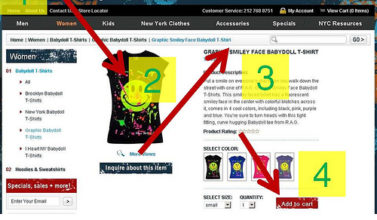
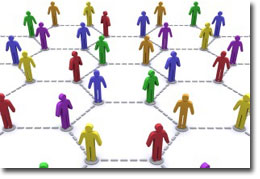
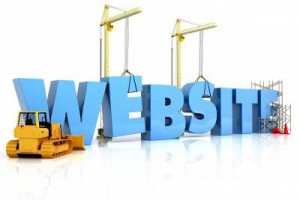
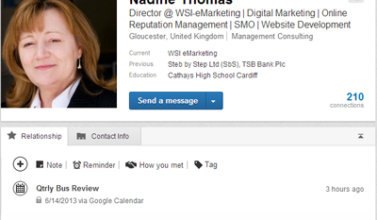






Leave a Comments